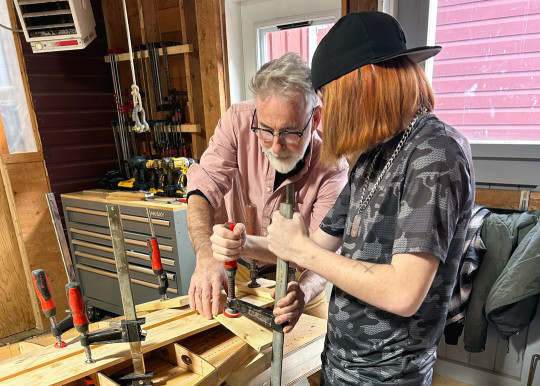Experiential learning program helps youth recover from mental health challenges
By Natalie Jarvis
While mental health care may begin in clinical settings, it is rooted in the community. Treatment extends beyond IWK walls and into the places we live, work, and play. As youth reconnect with themselves, doors open to build new coping skills – sometimes through programs delivered by community partners.
Steve Countway witnesses these moments firsthand as a recreation therapist at the Garron Centre, IWK’s inpatient mental health unit. He helps young people engage in leisure activities they enjoy while overcoming any barriers to participation.
“Recreation Therapy focuses on our ‘free time’ and what we like doing when we’re not working, in school or taking care of our basic needs. It should be something fun that we look forward to and that brings us happiness,” he says.
Countway is always searching for community connections that offer novel, positive, and supportive opportunities to those living with mental illness.
He spotted a perfect opportunity while attending the Ocean Youth Summit delivered by the Maritime Museum of the Atlantic last year.
Among the presenters was Eamonn Doorly, a seasoned shipwright leading education programs through the medium of boatbuilding. As he spoke, something clicked within Countway, and an idea began to grow.
Shortly after, Doorly and Countway designed a bi-weekly fall program for youth receiving treatment at the Garron Centre. Using a donated kit, youth worked together to build a stand-up paddleboard, completing the project in December.
“This program didn’t fall into your typical art, music, or physical activity categories. Each session ended with youth seeing tangible results, which made them leave feeling good about themselves and proud of what they just accomplished,” Countway says.
Doorly has restored and built replicas of large historical vessels within the museum for more than 40 years. In recent years, he’s broken out of solitary work with youth programs – one of which supports building high school credits.
“Among these youth, academic successes may be few. They may feel in the margins of society. Through these initiatives, you can see young people come alive because they see the results of their actions. They see that they have built something.”
– Eamonn Doorly, shipwright, Maritime Museum of the Atlantic
In just a few months, Doorly and Countway will join the participants involved on a voyage across the Halifax Harbour, heading to McNab’s Island on their paddleboard and other boards built by youth locally.
The pair are already talking about what to build with a new group of youth receiving treatment – a kayak, perhaps, or another small vessel come fall 2024.
“Youth take a lot of pride in – quite literally – building capacity for other kids to enjoy the water as well. There’s an altruism and a sense of giving back to their communities,” Doorly says.
